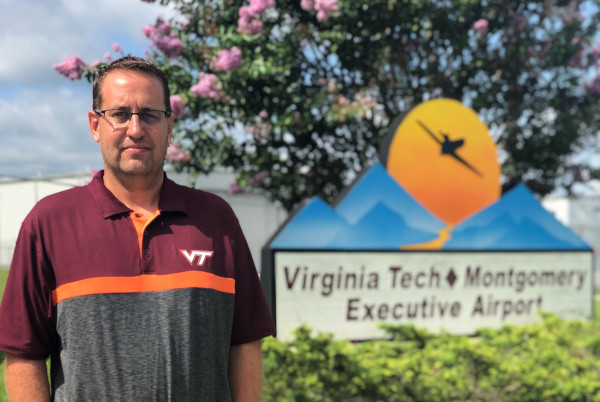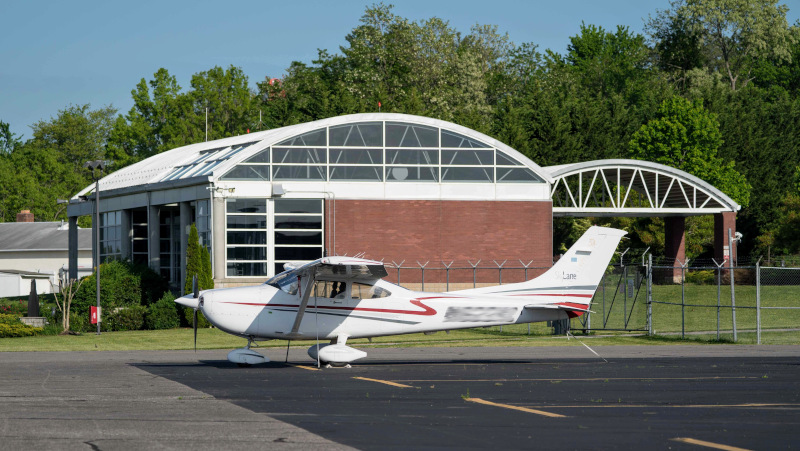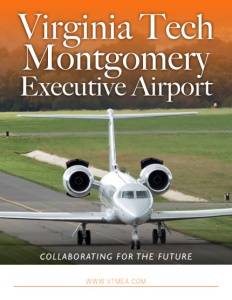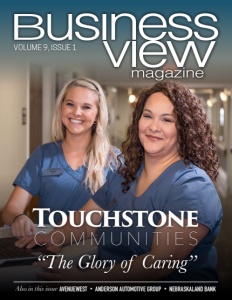Virginia Tech Montgomery Executive Airport
Collaborating for the future
Business View Magazine interviews Keith Holt, Executive Director of Virginia Tech Montgomery Executive Airport, for our focus on U.S. General Aviation
Ideally situated in the Town of Blacksburg, Virginia, Virginia Tech Montgomery Executive Airport (VTMEA) was established as part of the War Proceeds Act and is deeply connected to its namesake – Virginia Tech University. Due to the ties with the university (which has a strong focus on engineering), VTMEA is home to many advanced tech companies. Next door to the airport, a Corporate Research Center houses a number of high-tech companies of various sizes.
The airport has a number of facilities onsite, including a 4,000 square foot terminal building. In the last 18 months, the expansion project for the 5,500 ft long runway was completed, and this has contributed to the airport’s success. Keith Holt, Executive Director of VTMEA elaborates, “This project has substantially helped the airport to continue to grow and increased our business traffic. Currently, we have three corporate jets, 45 based aircraft, two rows of T-hangars, two corporate hangars, as well as a number of tie-down spaces.”
There is currently a waiting list for aircraft to be stationed at the airport, which is the general trend among regional airports throughout North America. Currently, there are plans to expand the airport’s hangar capacity, but Holt points out a challenge associated with the region. He notes, “The difficulties in Southwest Virginia are associated with site development costs. There are sites that are more conducive for the development, and good for hangar construction. Designs and site evaluations have been completed and include the engineering for some box hangars. But when you talk about constructing anything in Southwest Virginia, the topography is not flat, which is what we love about the area, but not so much when it comes to construction.”
The Airport Authority operates as its own Fixed-Base Operator (FBO). This authority is split between four entities, Montgomery County, the Town of Blacksburg, the Town of Christiansburg, and Virginia Tech University. FBO services at the airport include full refueling for Jet A and 100 low lead aircraft, and a tie-down transient ramp. Inside the terminal, the pilots have access to a lounge, which offers all the amenities such as ice and vending machines and coffee. There is also a rental car service (Enterprise Rental Car) at the terminal. Currently, the airport does not collaborate with the university for flight training, but there is a private flight instructor onsite, as well as a flight club.

Keith Holt, Executive Director
With every aspect of life being affected by COVID-19, the airport authority seized an opportunity to capitalize on the event. Holt recounts, “We were at the stage of renovating the runway where we needed to decide to complete it in phases or close it down. The management at the airport took the opportunity during the decrease in traffic to close the runway for 30 days. This allowed the contractors to complete the work ahead of schedule.”
Taking advantage of a difficult situation, the management team at VTMEA were able to minimize the number of calendar days worked on the runway expansion project. While 30 days is a long time, they didn’t miss out on traffic. Post-COVID lockdown, the airport is back, and above the pre-lockdown numbers. This is especially true when reviewing fuel sales, as well as operations counts.
However, one key area that was severely hampered by the pandemic was game-day traffic to the airport. “During game days at Virginia Tech the airport takes on a totally different look and feel,” says Holt. “The airport is extremely busy. But last year (2020) the stadium restrictions were down to 200-2,000 spectators. This meant there was no football traffic at the airport.” Since then traffic has bounced back, and 40-50 jets can land for a single game. Game day operations at the airport start 30 minutes before kickoff with jets landing. The ground crew then start refueling the jets, and it is just a matter of time before takeoff, time that is dependent on the results of the game. If it is a close game, departure times are tight on the taxiway.
The runway extension project, which added an additional 1,000 feet, took ten years of extensive planning due to the fact that South Gate Drive, the roadway leading into the university, had to be redesigned to accommodate the runway extension. Now that this project has been completed, the focus turns to the addition of new hangars, as well as a ramp expansion, along with pavement rehabilitation.
With the airport being positioned in a close proximity to the Eastern Continental Divide, water runoff flows in different directions, and maintaining where the storm water goes is important. The size of VTMEA makes it difficult to be an expert in all fields, this is especially true with airport planning and engineering. Eden and Associates, along with Parrish & Partners, have helped extensively with the airport and are always just a phone call away. These firms have answered questions relating to stormwater engineering, feasibility of future projects, budgets, as well as funding, and obstruction evaluations. Holt attests, “As a whole, they make an airport director’s job much easier and smoother.”
When it comes to seeking grants for projects, it’s important for airport management teams to work together. Holt shares, “Planning for grant funding is really a great way for any airport to maximize their dollars and worth. It also helps to be working with the local government and sponsoring jurisdictions in order to help solidify that you are a responsible fiscal agent, maximizing the funds, and bettering the community as a whole.”
As the past President of the Airport Operators Council, Holt has a wealth of knowledge about the industry. He notes, “The industry is changing quickly. In the past this wasn’t the case, but with so many new technologies and new facets that are changing in the world, it is even changing the mindset of individuals in the industry. I think back to when barely any airports had GPS approaches. Now they’ve become commonplace. That change happened so quickly and it has improved access to more reliable instrument approaches across the country.”

These improvements help make aviation better and safer. But now airports have to predict what changes they need to complete, such as moving to alternative fuels. Holt elaborates, “In regard to alternative fuels at the airport, what will the fuel farm look like? Electric aircraft, do we have the power grid to accommodate them? And where can we accommodate them? We’re seeing these questions arising on the horizon. Making changes of this scale can take planning for over ten years, but truthfully we’ll see these advancements in the shorter timeframe. This is exciting and aviation relevant.”
Regional airports like VTMEA are economic tools for communities, and they serve as the front-facing welcome mat to all industries travelling through the area. These airports play a vital role in promoting and maintaining healthy economic development. For the next 3-5 years, VTMEA is focused on projects like a ramp expansion at the airport, as well as the addition of more hangar space.
Holt sums it up well, explaining, “As the community and university grows we want to ensure our airport keeps pace with the surrounding developments. This is especially true due to our locality; the growth of Virginia Tech is very closely tied to the community. The airport needs to be a large part of that conversation and growth.”
AT A GLANCE
Virginia Tech Montgomery Executive Airport
What: A public, general aviation airport
Where: Town of Blacksburg, Montgomery County, Virginia
Website: www.vtmea.com




